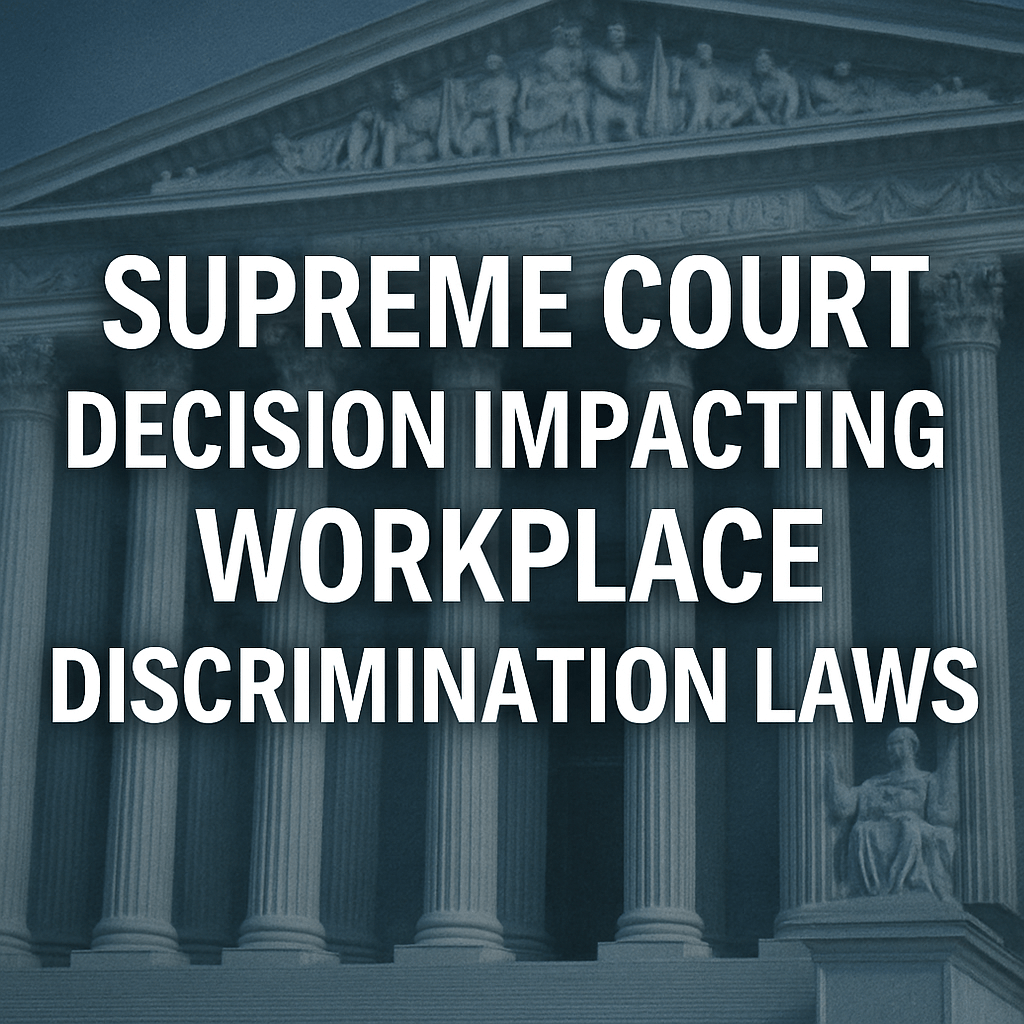Supreme Court Decision Impacting Workplace Discrimination Laws

A significant ruling issued by the Supreme Court on Thursday has the potential to reshape employment law across the United States. The decision, rendered unanimously, simplifies the process for individuals from majority groups, including white and heterosexual individuals, to bring workplace discrimination claims against their employers.
Understanding the Court’s Decision
The case at hand involved Marlean Ames, a former Ohio government employee who contended that she was unfairly bypassed for promotions that were granted to her gay coworkers. Ames, who identifies as straight, argued that her orientation played a crucial role in her employer’s decision-making process.
Prior to this ruling, certain lower circuit courts imposed a heightened burden of proof on plaintiffs from majority groups, requiring them to demonstrate the presence of atypical discriminatory motives from their employers. The Supreme Court’s ruling clarified that under Title VII of the Civil Rights Act of 1964, the same standard of evidence applies to all discrimination claims regardless of the plaintiff’s group status—majority or minority.
“The court essentially decided that discrimination is discrimination, and that all concerns around such should be taken seriously,” said Nonnie Shivers, a prominent employment and labor attorney at Ogletree Deakins.
Implications for Employment Law
The ruling is poised to impact the legal landscape significantly, particularly concerning the increasing frequency of reverse discrimination claims. Legal experts, such as Michael Steinberg from Seyfarth Shaw, predict that this decision will empower individuals, including men who have historically not been part of disadvantaged groups, to pursue claims under the same legal framework. “Now they’ll be armed with the Ames case, which confirms that the same framework for discrimination applies to anyone,” Steinberg commented.
Potential Surge in New Lawsuits
- Increase in Reverse Discrimination Cases: Employers may see an uptick in lawsuits filed by those who believe they have faced bias due to affirmative action policies or similar diversity initiatives.
- Reassessment of HR Policies: In light of the ruling, companies must review their human resources policies to ensure they are compliant with the new legal interpretation.
- Financial Implications: Companies may face increased costs associated with defending against heightened litigation and potential settlements or damages awarded in future cases.
The Context of Increasing Scrutiny on DEI Initiatives
This Supreme Court ruling comes during a politically charged climate, particularly concerning diversity, equity, and inclusion (DEI) initiatives within corporate environments. Following the Supreme Court’s ruling against affirmative action in higher education, many companies have reconsidered their DEI programs, with some rolling back previously implemented policies and practices. Such actions were primarily in response to mounting criticisms and the changing political landscape, which has witnessed former President Trump’s administration targeting DEI through executive orders.
As organizations navigate this evolving environment, they may be compelled to strike a balance between fostering inclusive workplaces and mitigating their exposure to potential legal challenges.
Legal Expert Opinions on Long-term Effects
Experts in employment law indicate that this ruling could lead to a substantial cultural shift within workplaces, compelling organizations to adopt more comprehensive training and awareness programs regarding discrimination. “This ruling underscores the importance of equitable treatment in all employment-related decisions, and organizations will need to consider this in their strategic planning,” noted legal scholar Susan P. Dunne.
Moreover, understanding the implications of this ruling on compliance with federal laws will be crucial for employers. They may need to enhance their monitoring systems to ensure that employees report discriminatory practices effectively and feel safe in doing so.
Conclusion
As the legal framework surrounding workplace discrimination evolves, this Supreme Court ruling marks a pivotal shift that demands careful attention from employers. The implications of this decision could result in a flurry of litigation and necessitate significant adjustments in how companies manage their human resources and DEI efforts.
This is a developing story; please check back for updates regarding its legal ramifications.
About the Author
Brit Morse is a Leadership reporter at Fortune, specializing in workplace trends and the C-suite. She also contributes to CHRO Daily, Fortune’s newsletter tailored for HR professionals and corporate leaders.